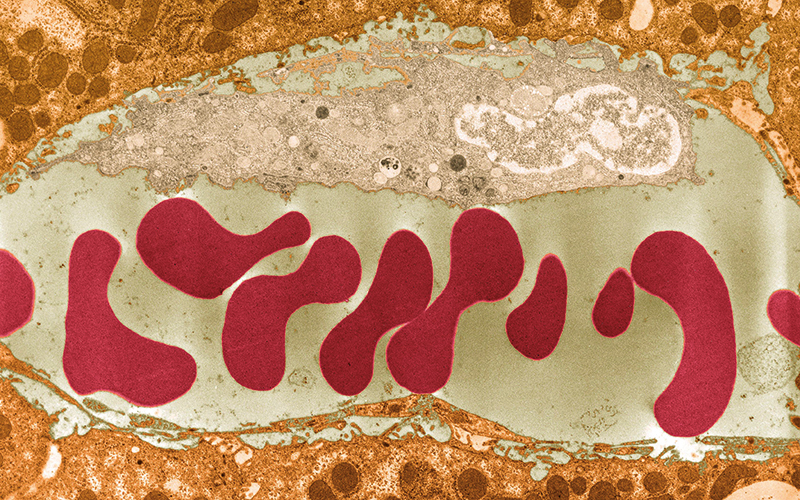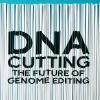What happens when you accelerate the ageing of blood cells? Professor Meng Wang explains his research.

The process of ageing affects every part of the human body, from individual cells to the major organ systems, such as the circulatory system, which includes the blood. Though this vital body fluid is constantly refreshed, even it cannot evade the depredations of the years.
Attempting to pin down the processes behind this deterioration, a joint research team from the Medical Research Council (MRC) Molecular Haematology Unit, the MRC Laboratory of Molecular Biology and the Wellcome-MRC Cambridge Stem Cell Institute has just published the results of its work in the article “Genotoxic aldehyde stress prematurely ages hematopoietic stem cells in a p53-driven manner” in Molecular Cell.
Ageing blood
The co-lead author is Meng Wang, formerly of the Wellcome-MRC Cambridge Stem Cell Institute and now Assistant Professor in Nutritional Sciences at Cornell University. The impetus for the research, he says, was to close the gap between the knowledge of the problems associated with ageing blood and the mechanism that drives it. “Blood, like any other cells, tissues and organs in our body, suffers from this process, which essentially is a natural decline in the ability to function. What it means is that once we reach the age of 70 or so, our ability to replenish blood cells and form blood is just not as good as when we were 20 or 30.”
This can create a number of problems, not least that the blood struggles to meet the physical demands of the body.
“The blood just can’t carry oxygen to get around to your body as efficiently. Another serious problem is that our blood cells fight infections, but if we don’t make as many immune cells and they don’t function properly, we are much more susceptible to infections. As the blood gets older there also is an increased risk of blood cancers.”
What do we already know about the causes of these detrimental effects? “Surprisingly little, other than the fact that it’s an inevitable part of living. In the lead-up to our study, we did know that certain factors such as inflammation can accelerate the ageing process, as can some genetic conditions. This gave rise to the hypothesis that perhaps damage to the DNA is a factor. When I say ‘inflammation and DNA damage’ these are really end processes as we live our lives.”
The researchers settled on analysing chemicals produced by the body, and in particular by the metabolism, that could damage the DNA and in turn trigger the ageing process and diseases such as cancer. The suspect put under the spotlight was the reactive chemical group, the aldehydes. One of the most common aldehydes is formaldehyde, known for its strong preservative qualities.
“What was quite surprising from research in the last few years initiated by Professor Ketan Patel and his team, which I was part of, is that our body makes a lot of these aldehydes itself. This raised the idea that maybe our main exposure to aldehydes is not from the environment but perhaps occurs every day in our bodies, which led to us wonder, do we make enough for it to be toxic and, if it is, what is the actual detrimental effect?”
Raising aldehyde levels
To test this, the team raised the level of aldehydes in mice. “We genetically deleted enzymes whose natural job is to detoxify formaldehyde. Taking off this brake allowed us to see how much the natural metabolism makes formaldehyde and what accelerated pathologies take place.”
The first effect was an increased incidence of cancer, discussed in a study published a couple of years ago. The second, and the subject of this latest article, is that when the team looked at the blood stem cells, they saw multiple attributes normally found in much older stem cells. “Mice that were around eight weeks’ old had stem cells with features that you only really see in a two-year old mouse. In human terms, it is like a 10-year-old with the blood stem cells of an 80-year-old. We had accelerated blood ageing by raising formaldehyde levels.”
Now the team was in a position to investigate the steps leading up to that process. “We focused on one major cell-response pathway that’s driven by
the transcription factor called p53, which plays a critical role in how a cell detects and responds to DNA damage. Looking at these aged cells, did they age because they accumulated various damage or did some response switch on to turn them old?”
To answer this question, the DNA damage response within the cells was switched off by genetically deleting p53. “Once we’d done that, all the DNA damage and the formaldehyde remained, but the stem cells no longer aged. They reverted to looking like the blood stem cells that you would normally expect to find in an eight-week-old mouse.”
Predetermined pathway
One potential interpretation of this is that ageing might not be the simple function of the passage of time. “This gradual decline in the blood stem cells is a response. It is as if there is a predetermined pathway, triggered by certain events and pushing certain buttons within the cell, but you can shut down this response with the surgically precise genetic deletion of p53.”
Thoughts are now turning to how the findings might translate to further research, technology or therapeutics.
In human terms, it is like a 10-year-old with the blood stem cells of an 80-year-old
“We have pinpointed that too much of this chemical made by our own bodies is not good. But the first important question is exactly which pathways in our body are making this chemical? We have some ideas.”
As part of this, the team needs to determine if formaldehyde is produced at a constant level every day or comes in bursts during periods of stress, if it is linked to infection or inflammation, or related to diet? “Understanding where it comes from is critical. If we have a concrete answer to that, the next question is can we modulate it and would it have a beneficial effect on health?”
It’s not the secret to everlasting life, not yet. “But perhaps with chronic degenerative conditions that have a basis in pathologically high levels of formaldehyde, we could switch that down. While we can’t stop people ageing, we may be able to help to them to age more healthily.”
Meng Wang

- 2005: BA, Medical and Veterinary Science Tripos, University of Cambridge
- 2010: PhD, Biological Sciences, MRC Laboratory of Molecular Biology, University of Cambridge
- 2011: MD, University of Cambridge Medical School
- 2015: MPhil, Clinical Sciences, University of Cambridge
- 2022: Cancer Research UK Clinician Scientist Fellowship, Dept of Haematology, University of Cambridge
- 2023: Assistant Professor, Division of Nutritional Science, Cornell University
Image Credit | Wellcome-Trust-Library




